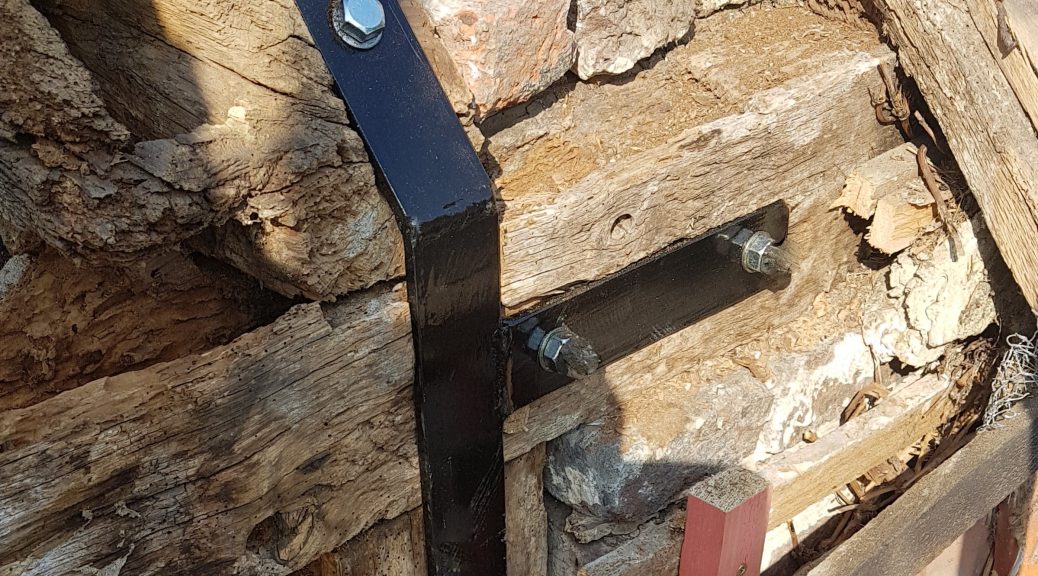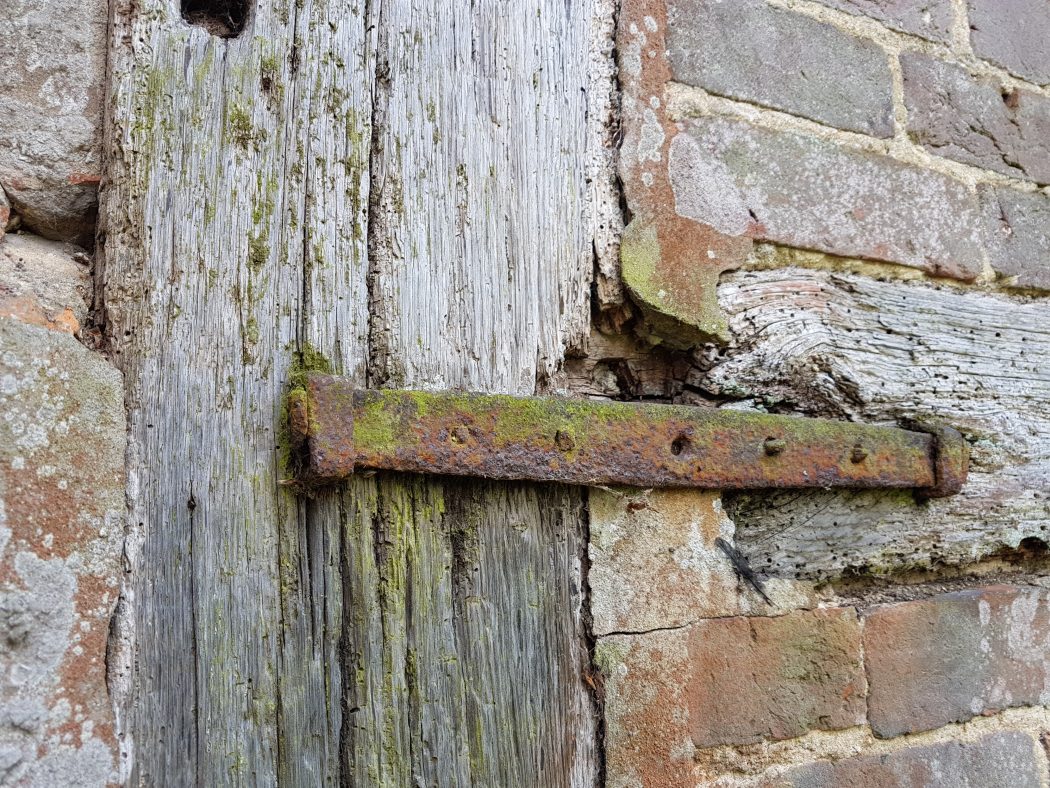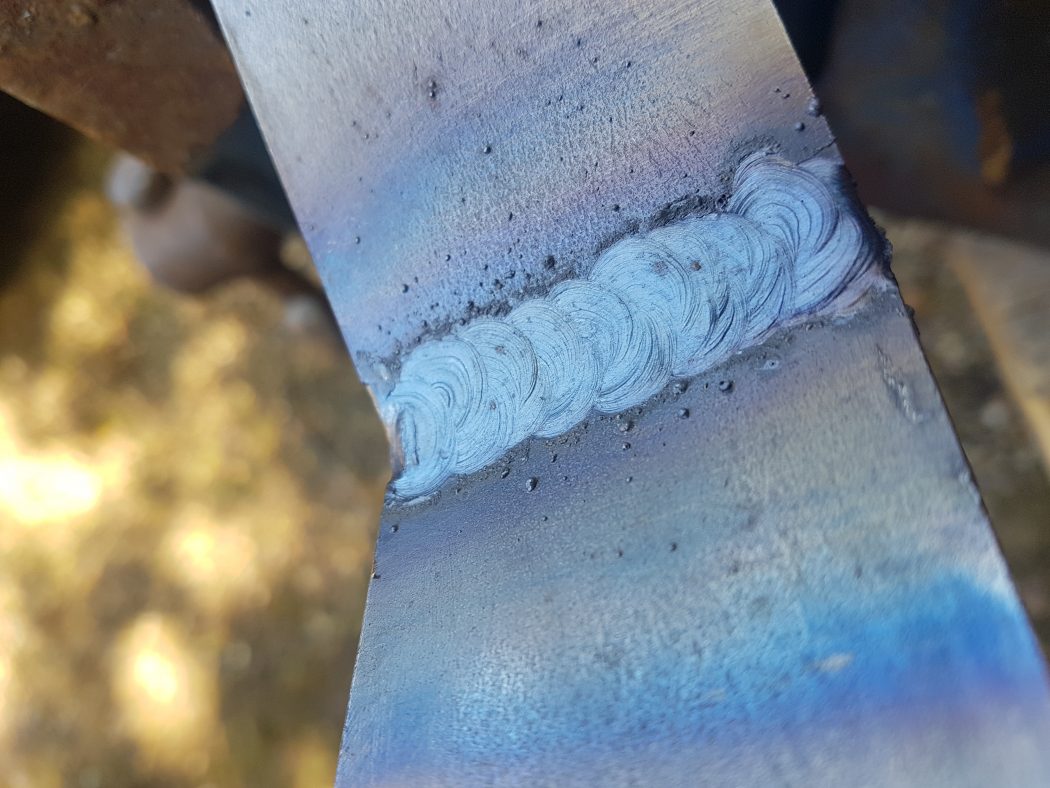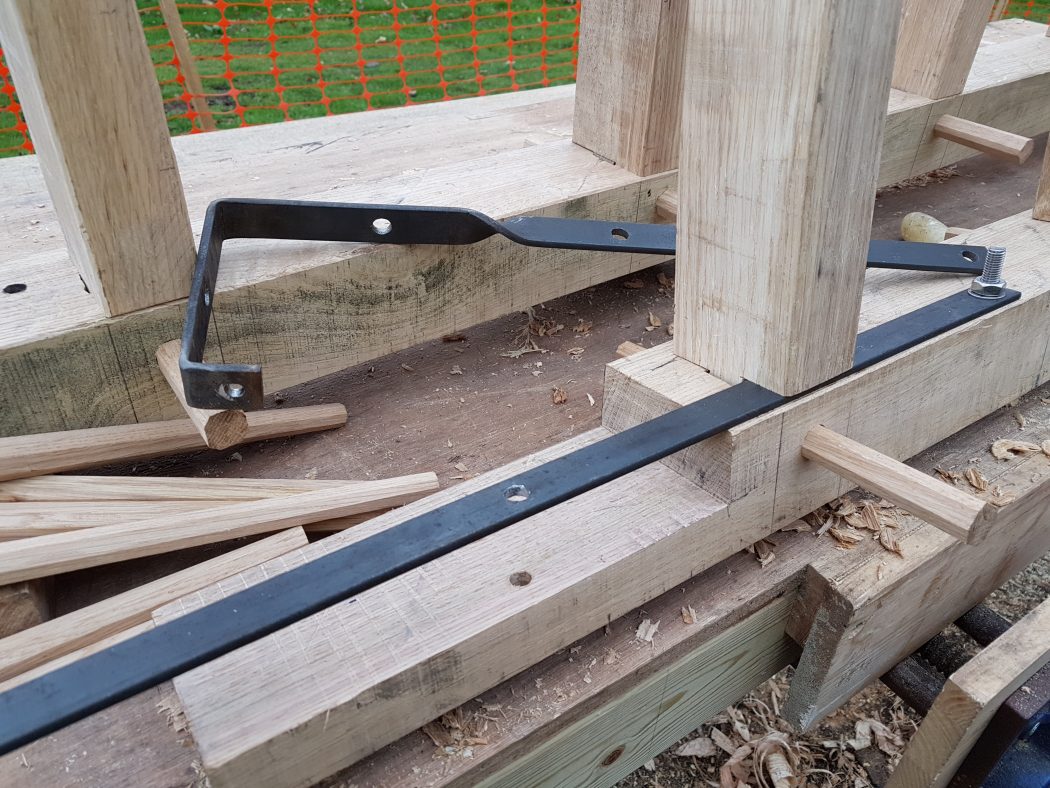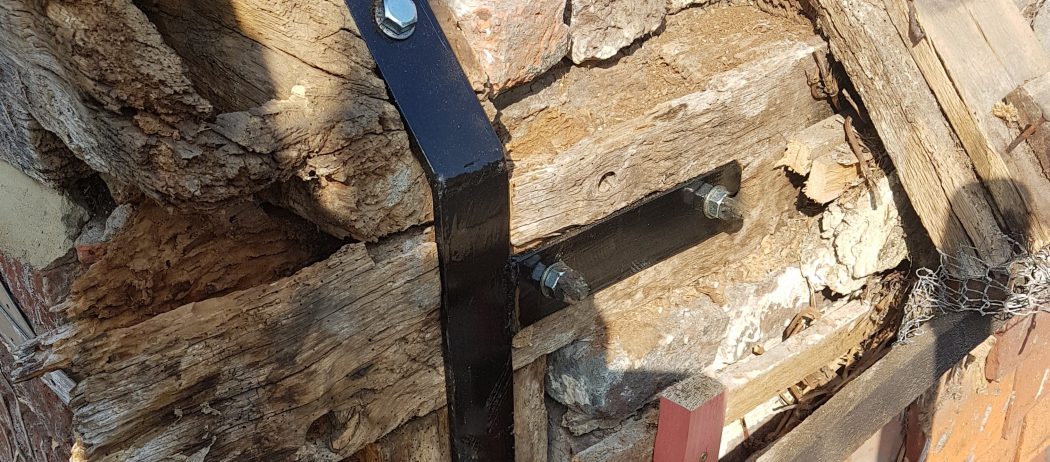We love metal straps and brackets, read on to find out why.
The use of metal straps and brackets is a valuable tool in the conservation of historic timber framed buildings. They have been used for centuries and were usually made by the local blacksmith often from old cart wheel rims. We frequently find them still working just as intended hundreds of years after they were made and fitted.
Using purpose-made steel straps and brackets enables extremely reliable and strong structural repairs to be made while causing a minimum of damage and disturbance to the existing structure, and if required at some time in the future they can be easily removed. This reversible method of repair is a favourite among all serious timber frame conservators.
One of the most common problems encountered in decayed timber framed structures is a failed mortise and tenon joint, where the tenon has pulled out the mortise or decayed away. To repair it with timber would inevitably mean the disassembly of large parts of the structure to remove the damaged timber and allow its repair. This inevitably disturbs a great deal of previously intact building and is probably out of all proportion to the original problem. However if a more holistic approach is taken and the timbers are left in place the failed joint could be strengthened with a correctly fitted metal strap, saving a lot of work and historic building fabric. As mentioned above, if needed, at some time in the future the strap could be easily removed.
How do they work? It is the joints on a timber frame that holds the structure together. As mentioned above these joints do on occasion fail. It is a big mistake to assume that filling the joint with lime or making a local timber patch repair will fix the problem. To believe this is naive in the extreme. A correctly sized and fitted steel strap or bracket will take the structural loads the joint was intended to take and spread the loads to stronger parts of the structure. All the weight and loadings are now safely transferred away from the failed joint which is now effectively redundant.
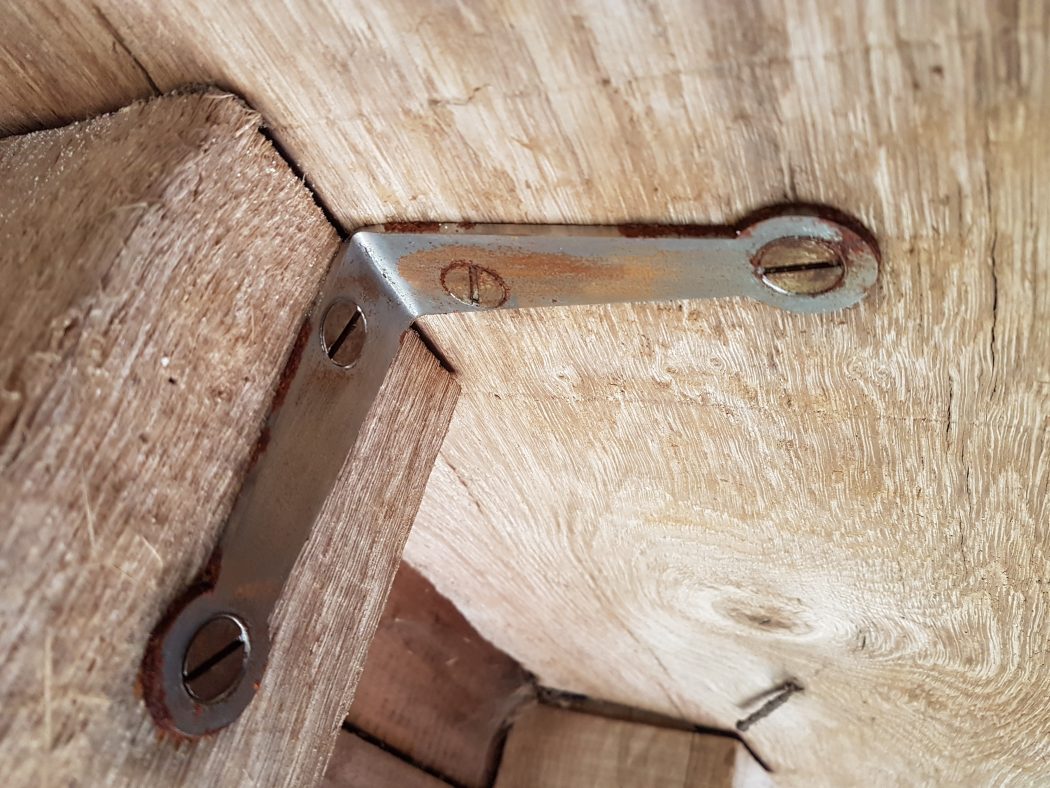
These were small brackets made to offer some supplementary support, They were left to rust and age naturally.
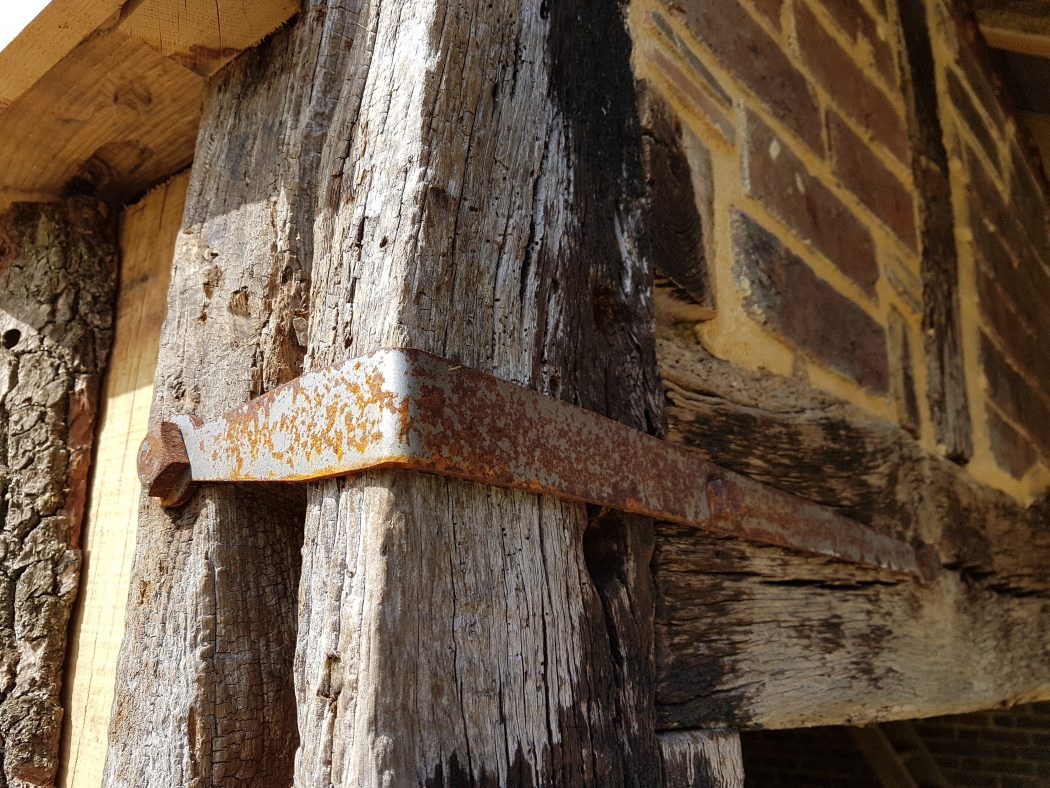
This is an excellent example of how a metal strap should be used, and in this example we left it to rust naturally.
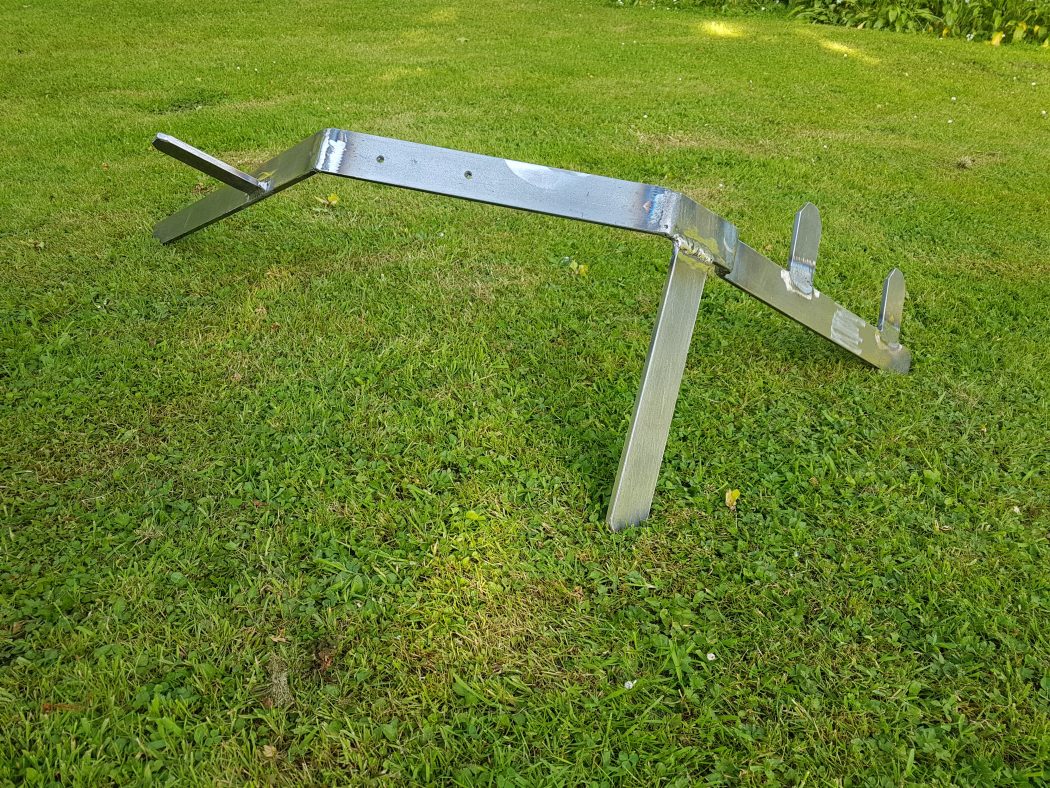
The straps we make are all bespoke to the task in hand and may be very simple straight straps a few inches long or complex brackets making spider like 3 dimensional shapes. Where and when needed we will employ some artistic creativity to ensure they are aesthetically pleasing when visible. This one was designed to secure the joint between corner post wall plate and tie beam. Once fitted it was not seen as part was in the loft and the part on the outside was hidden by tile hanging.

